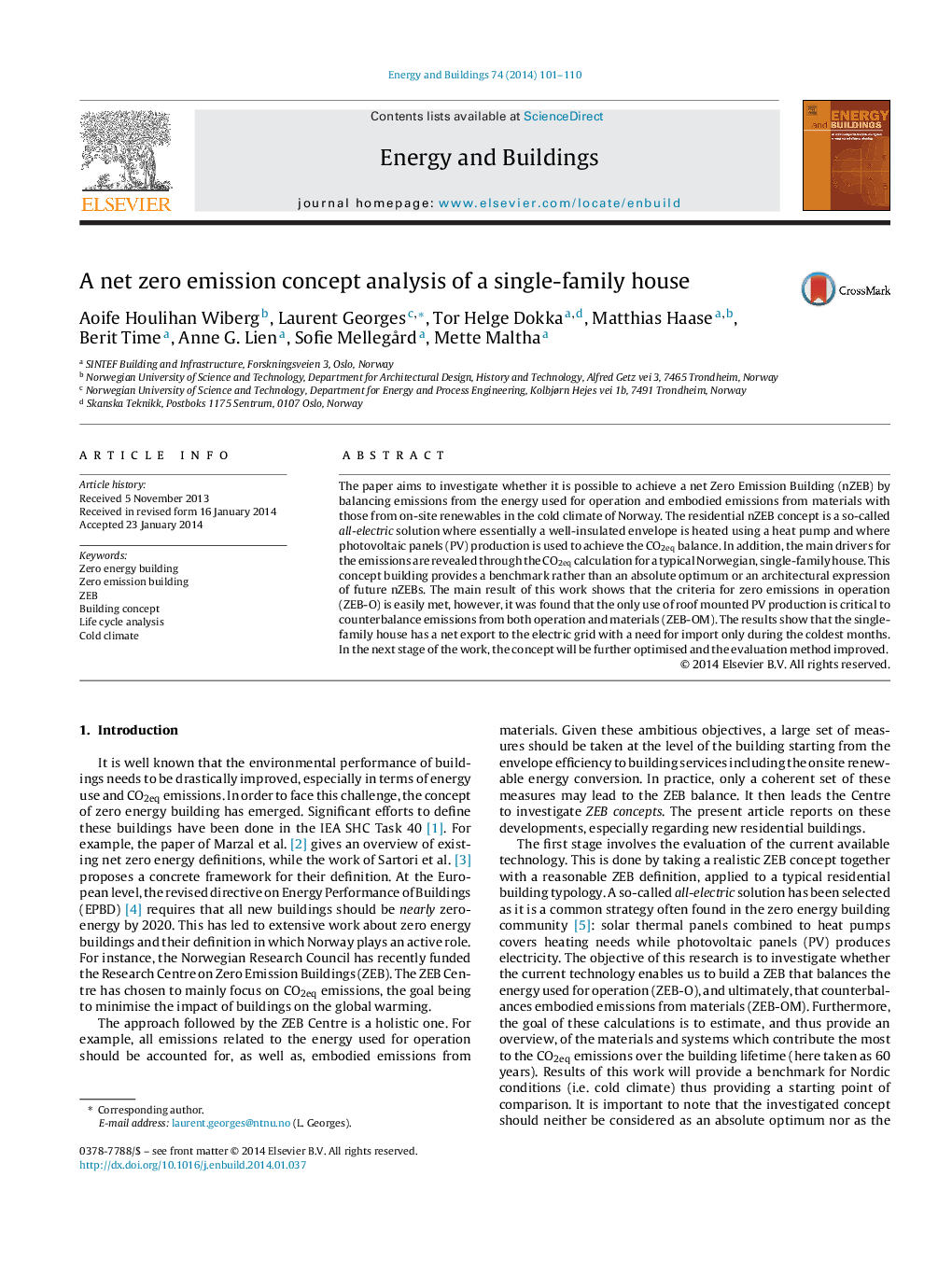| Article ID | Journal | Published Year | Pages | File Type |
|---|---|---|---|---|
| 262986 | Energy and Buildings | 2014 | 10 Pages |
•A concept of net zero emission building (nZEB) is investigated under cold climate.•Operational and embodied emissions are taken into account.•A single-family detached house and all-electric solution are considered.•Operational emissions are counterbalanced by the electricity production.•But total emissions including embodied emissions are not balanced.
The paper aims to investigate whether it is possible to achieve a net Zero Emission Building (nZEB) by balancing emissions from the energy used for operation and embodied emissions from materials with those from on-site renewables in the cold climate of Norway. The residential nZEB concept is a so-called all-electric solution where essentially a well-insulated envelope is heated using a heat pump and where photovoltaic panels (PV) production is used to achieve the CO2eq balance. In addition, the main drivers for the emissions are revealed through the CO2eq calculation for a typical Norwegian, single-family house. This concept building provides a benchmark rather than an absolute optimum or an architectural expression of future nZEBs. The main result of this work shows that the criteria for zero emissions in operation (ZEB-O) is easily met, however, it was found that the only use of roof mounted PV production is critical to counterbalance emissions from both operation and materials (ZEB-OM). The results show that the single-family house has a net export to the electric grid with a need for import only during the coldest months. In the next stage of the work, the concept will be further optimised and the evaluation method improved.
